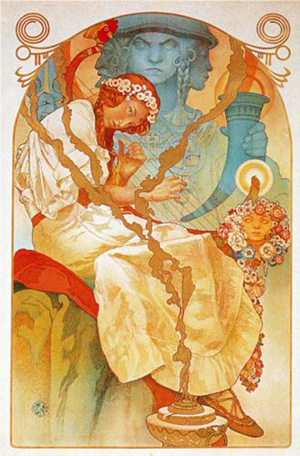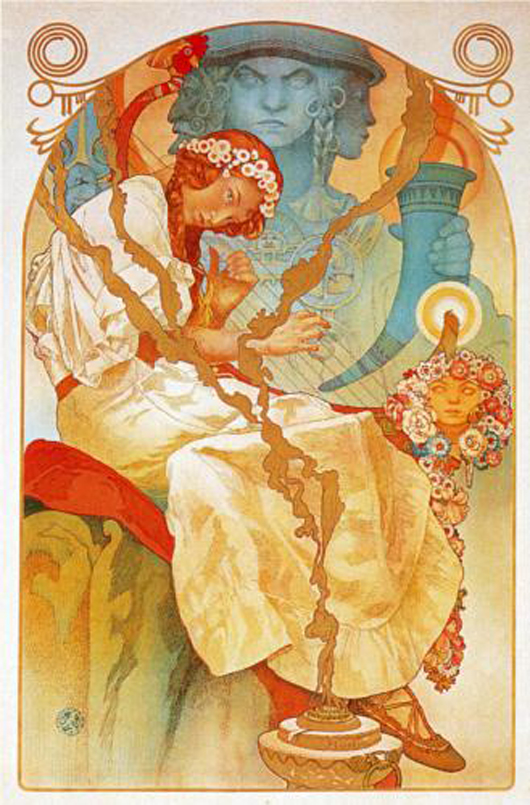
PRAGUE (AFP) – The Slav Epic by Alfons Mucha, a Czech Art Nouveau gem, went on display in Prague on Thursday, fulfilling the wish of the artist who spent 18 years on the series of paintings from 1910 to 1928.
The cycle of 20 allegories tracing the history of the Slavic people and inspired in part by mythology was unveiled at Prague palace where it was first exhibited in 1928, on the 10th anniversary of Czechoslovak independence.
Mucha (1860-1939) gained fame for his iconically styled posters depicting French actress Sarah Bernhardt embellished with the flowing floral motifs typical of the Art Nouveau style.
The largest tableau in the “Slav Epic” series spans 26 feet by 20 feet. To create the cycle, Mucha traveled avidly through Russia, Poland, Serbia and Bulgaria.
“One must not look at these paintings as a history book,” art historian Lenka Bydzovska said at the opening of the exhibition.
“This is a fictional world, dreamt up by the artist himself,” she added.
The paintings are displayed in chronological order, starting with The Slavs in Their Country of Origin and ending with the Slavs for Humanity.
City Gallery Prague head Milan Bufka said The Slav Epic would be on display at the palace for at least five years.
“We have installed new heating, air-conditioning and lighting systems to ensure stable conditions for the precious paintings,” Bufka said.
American Slavophile Charles Crane commissioned the work by Mucha and intended to donate it to Prague on condition the city built a new gallery dedicated exclusively to the masterpiece, which has never happened.
In 1933, the paintings were rolled up and stored in a depository, and were hidden from the Nazis under a heap of coal during World War II.
They were restored after the war and from 1963 displayed at the Moravsky Krumlov chateau in the southeast of the country, near Mucha’s hometown of Ivancice.
Last year, authorities decided to move the works to Prague, citing the deteriorating condition of the Moravsky Krumlov chateau.
ADDITIONAL IMAGE OF NOTE



